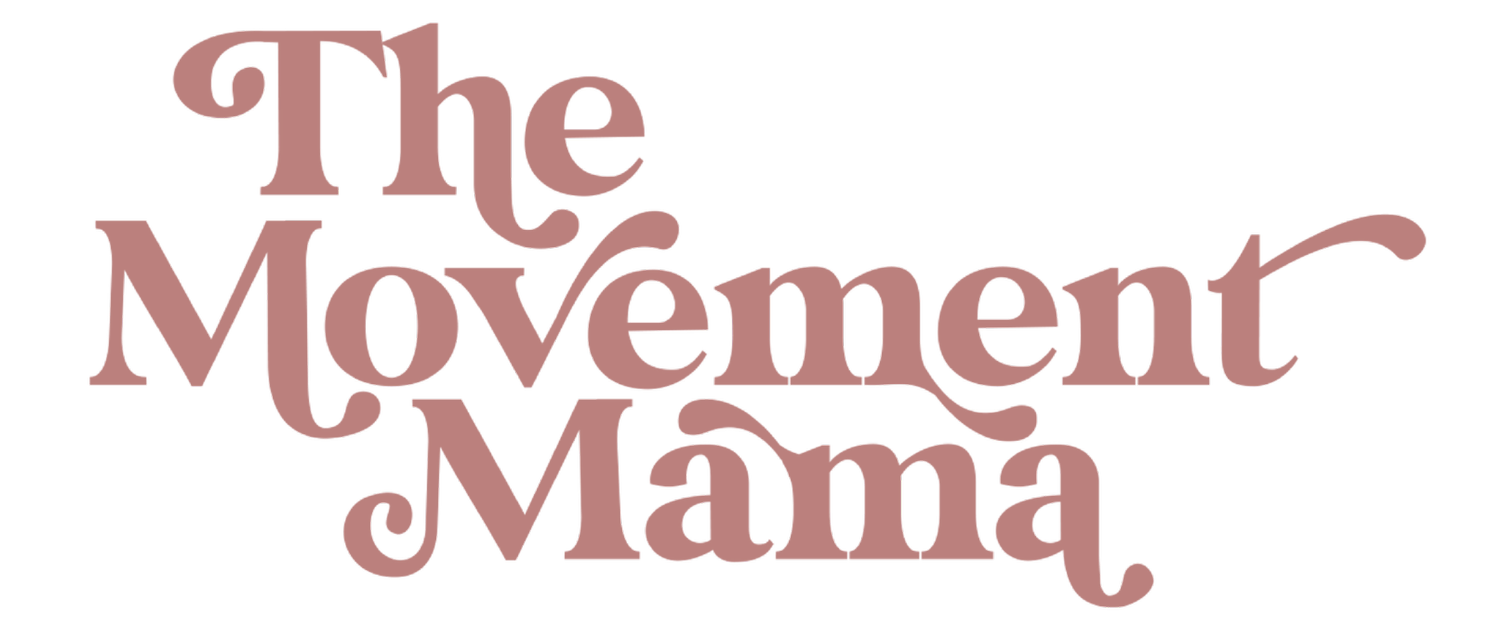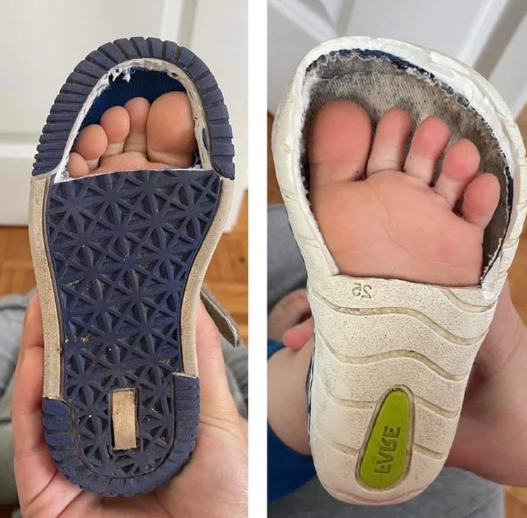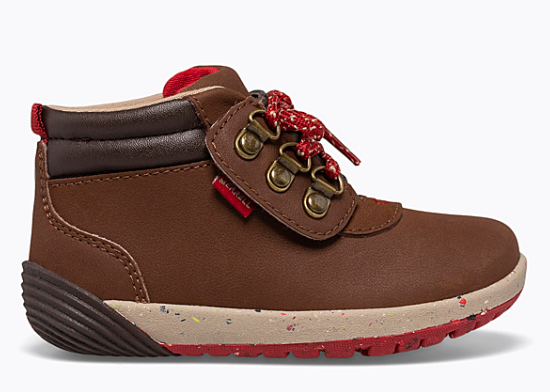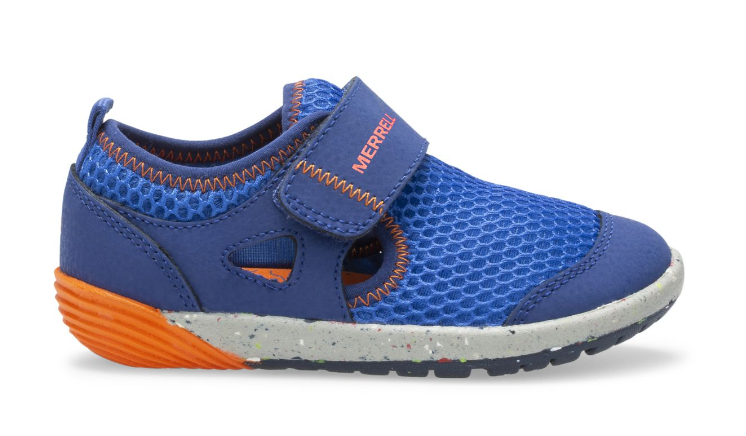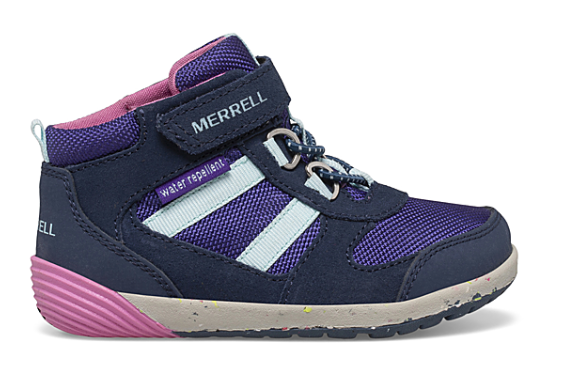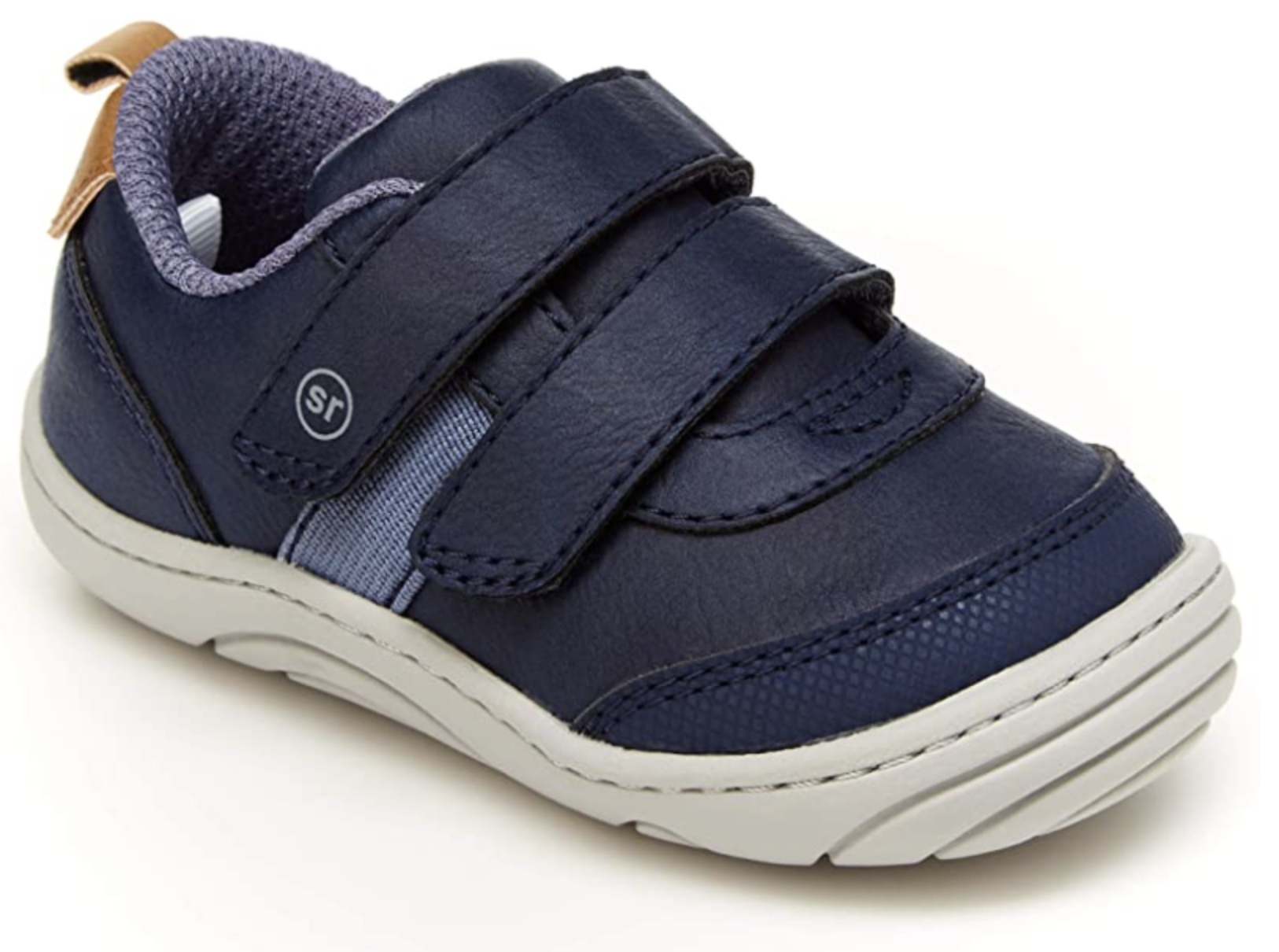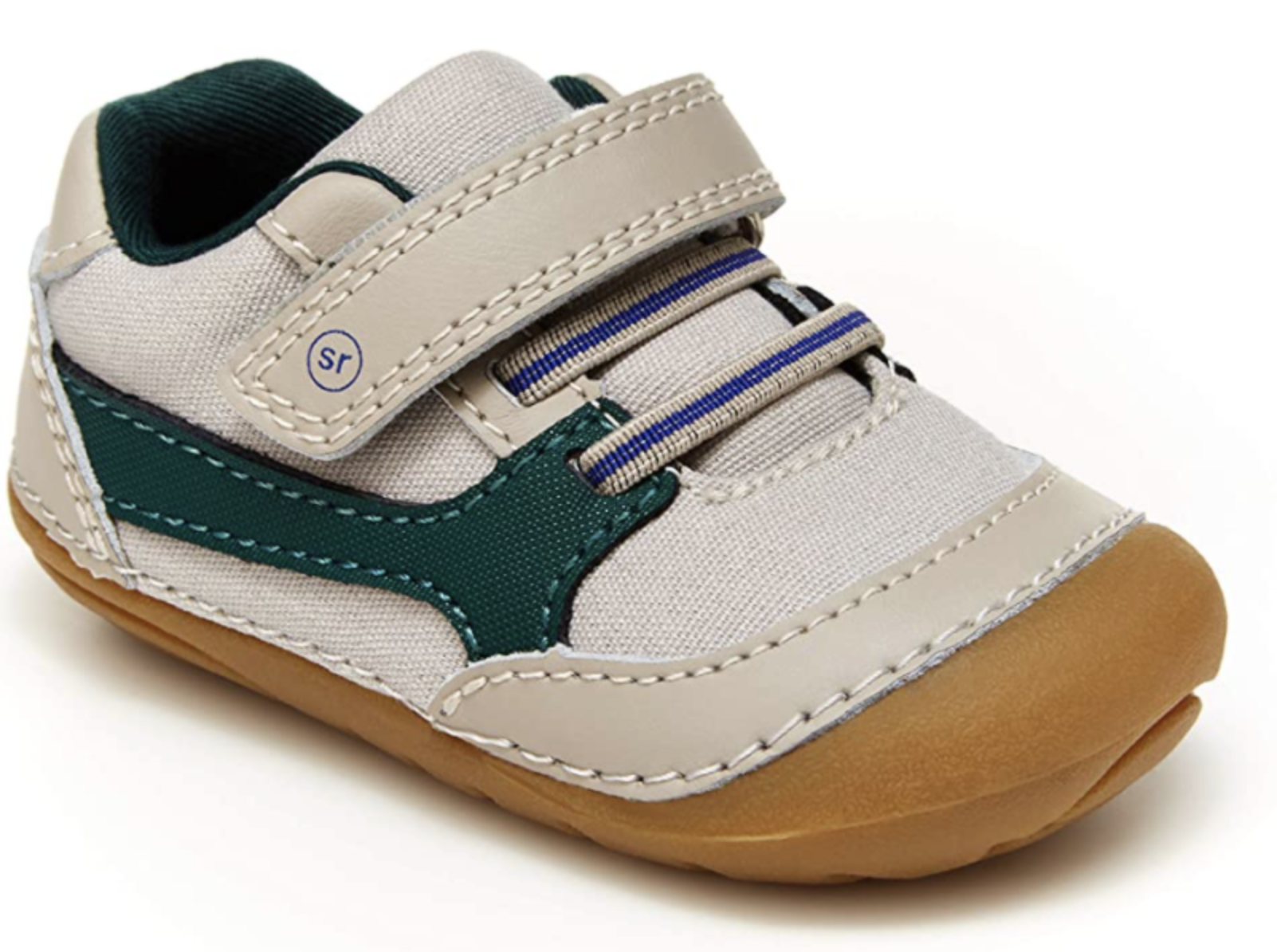Best Shoes For New Walkers - A Pediatric Pt’s Guide
For more resources like this, check out these other Movement Mama posts:
Spring + Summer Shoes for New Walkers
Winter Shoes for New Walkers: A Pediatric Physical Therapist’s Guide
How I Pick the Best Shoes for New Walkers (and How You Can Too)
Let’s talk toddler shoes. If you’ve ever stood in the baby shoe aisle wondering, “What are the best shoes for new walkers?”—you’re not alone. I’ve been there too, and as a pediatric physical therapist (and a mom), I know how overwhelming it can feel. So today, I’m sharing exactly what I look for when choosing the best toddler shoes for learning to walk. By the end, you’ll feel confident you’re making the right choice for your little one’s growing feet.
This post contains affiliate links that aid in supporting The Movement Mama at no additional cost to you. You can learn more by reading my disclosure policy.
Is Your Baby Ready for Shoes Yet?
Here’s the short answer: barefoot is best until your baby is walking independently in the community. Barefoot play on grass or sand is still encouraged because it helps with sensory processing and balance.
So when do shoes come in?
When your child is walking confidently outdoors or in places like daycare or the grocery store.
Or if you notice signs of excessive flat feet, joint hypermobility, or delayed standing milestones.
Why barefoot first?
Going barefoot allows the foot and ankle muscles to develop naturally. Without shoes, your baby can feel where they are in space, which builds confidence and balance. If you do notice poor alignment or joint hypermobility that’s slowing progress, adding a supportive shoe during standing and walking practice can help improve stability
Bottom line: If your little one isn’t walking independently yet, skip the structured shoes and stick with soft-soled moccasins. Shoes are really for protection when walking outdoors—not for early standing practice. Still unsure? I’ve got a post breaking this down—check that out next.
Now that you're up to speed on whether or not your babe is ready for a shoe, let's get down to business.
Flat Feet? Totally Normal (Most of the Time)
I want to be clear that "flat feet" in infancy/early toddlerhood are completely normal, as they have a fat pad on the inside of their arch that causes this appearance until around age 2.
However, an excessive collapsing of the arch and back of the heel that is causing difficulty with standing activities is absolutely something you should speak with your Pediatrician about and consult with a Physical Therapist to determine the correct course of action for supporting your little one's growing foot.
What Makes the Best Shoes for New Walkers?
Alright because I know you're going to ask, these shoes are from Ten Little (they also come in this fun Eco Canvas version now + go up to big kid sizes with laces!) And just so we're totally clear: for the purpose of this post specifically, we're speaking about a toddler who requires a shoe to walk outdoors or indoors such as stores, daycare, etc. This toddler also has no musculoskeletal abnormalities or abnormal foot position. We are just talking about general population kiddos with no developmental delays, ok? Okay.
Now that we've got that out of the way, here's the breakdown of what I want you to look for when going to a shoe store or clicking on some targeted baby shoe ad on Facebook:
Pull loop: Let's start simple. Just trust me when I say this will make your life 10,000x easier getting those chubby little feet into their shoes.
Velcro straps: Baby feet come in all shapes and sizes. And as toddlers grow, they lose the fatty tissue on their feet at times when their foot length may not actually change. Velcro straps not only allow for easy adjustability for their comfort but they also encourage independence at a younger age when they're able to get shoes on/off themselves. You may not want to teach this if you don't want every car ride to end in them kicking their shoes off, or you may just learn to not put shoes on until you reach your destination :) I'll let you decide.
Slight toe rise: Learning to walk is hard. Falling isn't fun, but it's a necessary part of learning. I love finding a shoe that has just a slight rise in the toe. Excessive toe rise isn't necessary, but giving our new walkers a bit of an advantage against tripping over their toes is helpful and encourages them to continue trying to walk throughout more of their day.
Wide toe box: Here's an amazing visual from My Foot Function that demonstrates WHY a wide toe box is so crucial to supporting tiny growing feet. Sure you may be able to slide your toddler's feet perfectly into a shoe in sitting, but when they stand, their foot and toes splay out. It's no wonder so many kids complain about shoe-wearing at first. They're used to letting their piggies free.
Protective, flexible sole: The biggest indicator that a child needs to switch from a soft soled moccasin to a shoe with an actual footplate is when they begin walking in the community. Meaning they may encounter rocks, sticks, mulch, heat/cold, sharp objects, etc and we need to protect their feet. And while we want the sole to be thick enough to prevent penetration of sharp objects, we also want it to be flexible enough for your little one to feel surface changes beneath their feet. This not only helps them be more balanced by giving them lots of feedback about where their body is in space + how to adjust their walking accordingly, but it also helps to strengthen the tiny muscles of the foot and ankle that are necessary for developing the arches of the foot, as well as the stability required for higher level motor skills.
While we probably would get in trouble if we cut a shoe open like this at the store to check the fit, we still have an opportunity to do a proper fit check. You know I have you covered on that as well, so check out my How to Measure A Toddler’s Shoe Size guide.
Quick Fit Check
Slip the shoes on your sweet babe and have them stand up (remember, unless they're independently standing and walking, they don't need to be in shoes like this, they should be in a soft soled moccasin where able). Use your thumb or pointer finger to feel on top of the shoe where each toe is. This isn't the easiest thing in the world to do, but take the time to push your finger on either side of each toe to ensure there's adequate space. Observe how they look in standing--do their feet look scrunched or uncomfortable? Do they act like it's painful? Some resistance to shoe-wearing at first can be common: they've never worn shoes, after all. But you know your child best--trust your gut. If it's telling you it's not a proper fit, try a different size or a different shoe style.
For a quick check, see if you can bend the shoe in half, bringing the toe and heel up simultaneously. If you can do that, it’s likely flexible enough for your new walker
I recently have become obsessed with SeeKaiRun! These are a great option that still check all the boxes, but I will say they are not as waterproof! My kids are WILD and can be found splashing in creeks or puddles at any time, but this may not be important to you! You can also find some cheaper options through their Target line, but I recommend signing up for emails from SKR directly, as they have amazing up to 60% off sales!
After loving their water shoes, we are starting to branch out into using anything from the Bare Steps line by Merrell! These are minimalist shoes by nature and you can even find hiking boots that are nice and flexible to allow your babe’s foot to develop independently!
I also have had success with Stride Rite shoes for new walkers. Be sure to use my checklist above, though, as some.of them are too firm. You can find these 4 below at my shoe idea list here. Some kiddos need more support, though! If your kiddo met some of the criteria for a “low tone foot” in the images at the beginning of this blog, Stride Rite is a great option to give them some added stability!
Just remember, if these aren't in your budget, you can STILL find great shoes that fit the bill for my shoe-buying checklist above. You can also find some available via Amazon here.
not seeing any you love? here are some tried and true barefoot shoe brands to check out!
Ten little
little love bug
splay (code movement for 10% off)
merrell bare steps
saguaro (code movementmama for 10% off)
vivo
seekairun
Looking for the best shoes for spring and summer? Check out my top picks here.
Need winter shoes for your toddler? Find my favorites here.
FAQ
-
Always measure their foot in standing because their foot splays out when they stand. Use a toy or a show to keep them still if needed. Each brand has its own size chart, so always check the chart for the shoes you’re buying. For more information check out my how-to guide!
-
You might see W, XW, or N—these stand for Wide, Extra Wide, and Narrow. Adjusting width is better than sizing up or down. If your child has chunky feet or needs orthotics, go for Wide or Extra Wide. Narrow feet? Find shoes designed for that fit.
-
Yes, as long as the shoes are high-quality and show minimal wear. Worn-out shoes can affect alignment and stability, which is important for growing feet. If you’re considering secondhand shoes, check for proper tread, flexibility, and heel support. Read my guide for more practical tips for making hand-me-down shoes work.
-
If your toddler has wide or chunky feet, the right fit matters for comfort and stability. Look for shoes with a wide toe box, adjustable straps, and flexible materials. Avoid sizing up, as that can cause balance issues. Check out my tips and tricks here!
How else can I help?!
